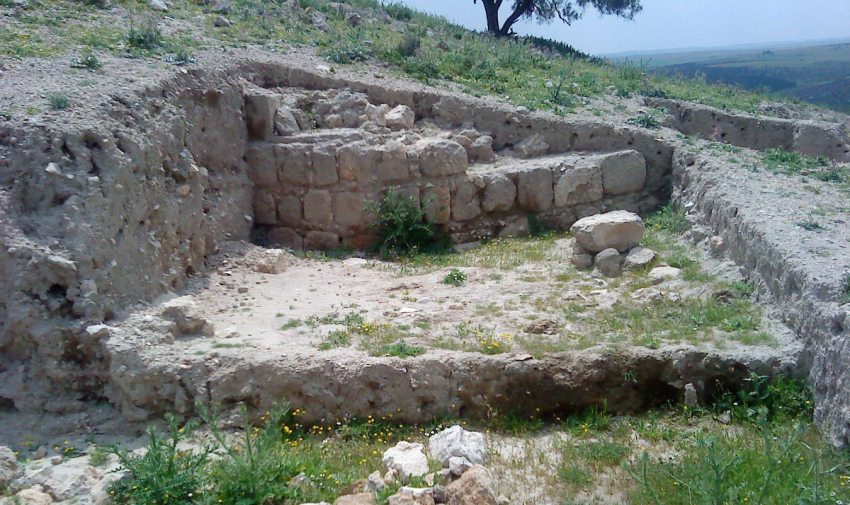New research affirms destruction of biblical city described in 2 Kings, archaeologists say

Israeli scholars say their research affirms the destruction of a biblical city — the conquest of Gath by King Hazael of Aram detailed in the Second Book of Kings — using a novel technology that measures magnetic fields in burnt bricks.
Scientists from Tel Aviv University, the Hebrew University of Jerusalem, Bar-Ilan University in Ramat Gan and Ariel University in Samaria made a discovery that enables archaeologists to identify burnt materials found in excavations and estimate their firing temperatures.
This innovative study seemingly validates the biblical account of the destruction of the Philistine city of Gath by Hazael, king of Aram, as depicted in 2 Kings 17:17. The narrative describes Hazael's conquest of Gath before turning his attention to Jerusalem.
"About this time Hazael king of Aram went up and attacked Gath and captured it. Then he turned to attack Jerusalem," reads the passage.
The study was published in the journal PLOS ONE for the project titled "Applying thermal demagnetization to archaeological materials: A tool for detecting burnt clay and estimating its firing temperature."
"Our findings are important for determining the intensity of the fire and the scope of destruction in Gath — the largest and most powerful city in the land at the time — and also for understanding construction practices in the region," Prof. Aren Maeir from the Martin (Szusz) Department of Land of Israel Studies and Archaeology at Bar-Ilan University said in a statement.
The research focused on findings from Tell es-Safi, identified as biblical Gath. The team, led by Dr. Yoav Vaknin from the Sonia & Marco Nadler Institute of Archaeology at Tel Aviv University, demonstrated that the bricks in a city wall were burned in a conflagration during the city's destruction. The study also contradicts previous assumptions that the bricks were kiln-fired before their construction.
In an interview with The Jerusalem Post, Vaknin highlighted the historical context, noting that in regions like Mesopotamia, where stone was scarce, inhabitants would fire mud bricks in kilns to enhance their strength and durability. This practice is mentioned in the biblical story of the Tower of Babel (Genesis 11:3).
Prof. Lipschits, another researcher on the project, emphasized the importance of mud bricks as the primary building material in the Land of Israel during the Bronze and Iron Ages.
"Throughout the Bronze and Iron Ages, the main building material in most parts of the Land of Israel was mud bricks. This cheap and readily available material was used to build walls in most buildings, sometimes on top of stone foundations," Lipschits explained, according to All Israel News. "That's why it's so important to understand the technology used in making these bricks."
Dr. Vaknin added that most researchers believe the technology of kiln-firing bricks did not reach the Land of Israel until the Roman conquest. Prior to this, inhabitants used sun-dried mud bricks. The new method developed by the team can conclusively determine whether bricks found in archaeological excavations were fired in a kiln or burned in situ during a destructive event.
The method hinges on the magnetic properties of mud bricks. Sun-dried bricks exhibit a random magnetic orientation, but when fired, their ferromagnetic particles align with the Earth's magnetic field. The researchers discovered that reheating the bricks in a special oven could cancel this alignment, returning the bricks to their original random orientation at the temperature at which they were initially fired.
This technique revealed that the bricks from Gath were fired at temperatures consistent with a conflagration rather than kiln-firing, which involves much higher temperatures.
In July, a mosaic panel depicting biblical stories uncovered at an ancient synagogue was discovered by archeologists seeking answers about the impact of early Christian rule on Jewish people.
In September, archaeologists from the Hebrew University of Jerusalem reported that an ancient inscription paraphrasing the first two verses of Psalm 86 was uncovered from a remote site in the Judean desert of Israel.
Leah M. Klett is a reporter for The Christian Post. She can be reached at: leah.klett@christianpost.com



























